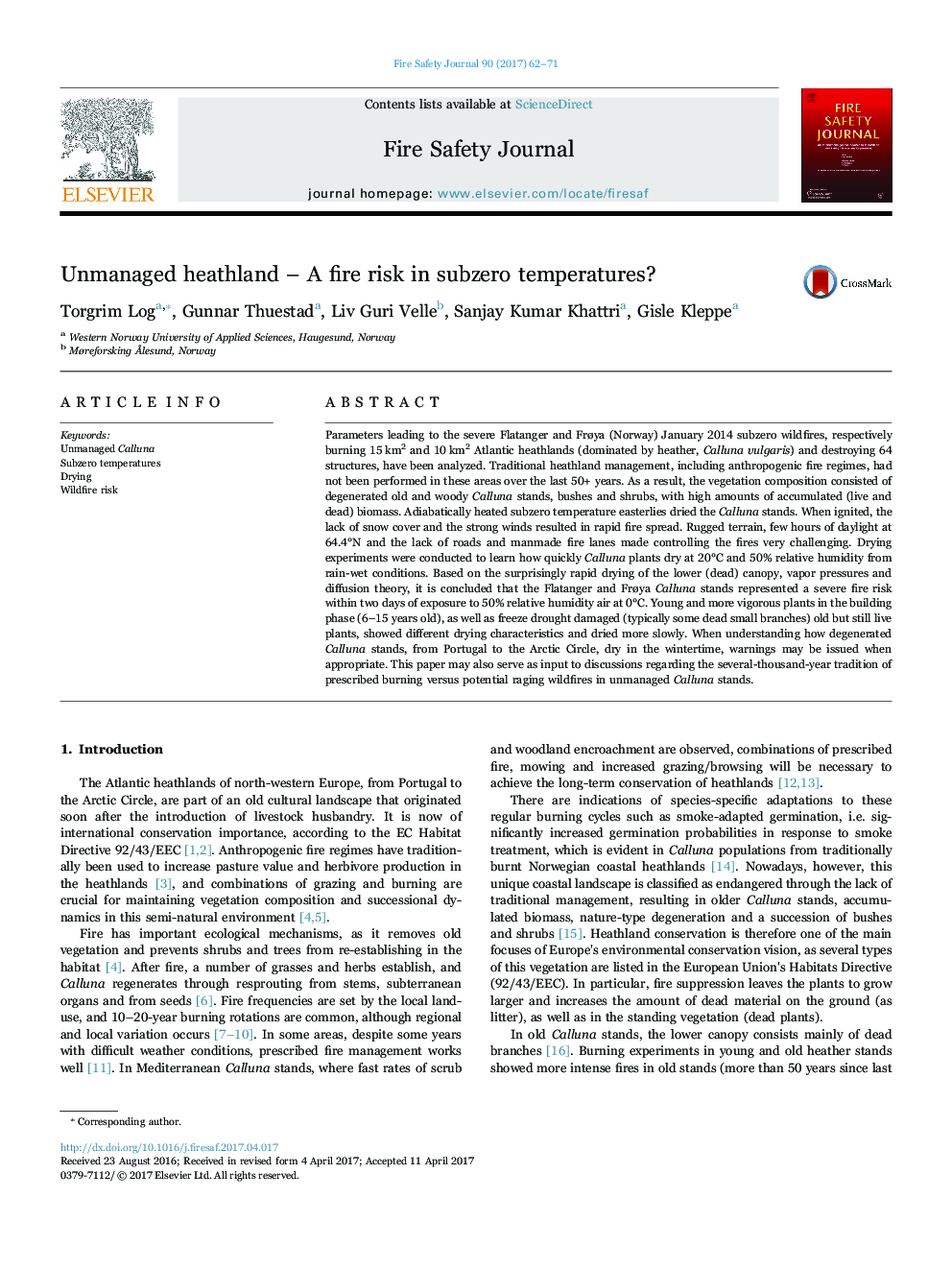| Article ID | Journal | Published Year | Pages | File Type |
|---|---|---|---|---|
| 4920868 | Fire Safety Journal | 2017 | 10 Pages |
Abstract
Parameters leading to the severe Flatanger and Frøya (Norway) January 2014 subzero wildfires, respectively burning 15 km2 and 10 km2 Atlantic heathlands (dominated by heather, Calluna vulgaris) and destroying 64 structures, have been analyzed. Traditional heathland management, including anthropogenic fire regimes, had not been performed in these areas over the last 50+ years. As a result, the vegetation composition consisted of degenerated old and woody Calluna stands, bushes and shrubs, with high amounts of accumulated (live and dead) biomass. Adiabatically heated subzero temperature easterlies dried the Calluna stands. When ignited, the lack of snow cover and the strong winds resulted in rapid fire spread. Rugged terrain, few hours of daylight at 64.4°N and the lack of roads and manmade fire lanes made controlling the fires very challenging. Drying experiments were conducted to learn how quickly Calluna plants dry at 20°C and 50% relative humidity from rain-wet conditions. Based on the surprisingly rapid drying of the lower (dead) canopy, vapor pressures and diffusion theory, it is concluded that the Flatanger and Frøya Calluna stands represented a severe fire risk within two days of exposure to 50% relative humidity air at 0°C. Young and more vigorous plants in the building phase (6-15 years old), as well as freeze drought damaged (typically some dead small branches) old but still live plants, showed different drying characteristics and dried more slowly. When understanding how degenerated Calluna stands, from Portugal to the Arctic Circle, dry in the wintertime, warnings may be issued when appropriate. This paper may also serve as input to discussions regarding the several-thousand-year tradition of prescribed burning versus potential raging wildfires in unmanaged Calluna stands.
Related Topics
Physical Sciences and Engineering
Engineering
Civil and Structural Engineering
Authors
Torgrim Log, Gunnar Thuestad, Liv Guri Velle, Sanjay Kumar Khattri, Gisle Kleppe,
